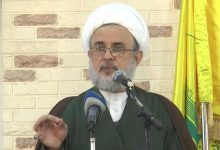Uprising of “24 Hoot” Afghanistan; A revolution that was Islamic

Today, 24 Hout coincides with the 43rd anniversary of the bloody uprising of the people of Herat, which was the beginning of the struggles of the Muslim people of Afghanistan throughout the country.
Tired of the tyranny of the communist government of Afghanistan, inspired by the recent victory of the Islamic Revolution in Iran, the Muslim people of Afghanistan revolted against the ruling communist regime in the city of Herat on March 15, 1979.
In this uprising, the 17th Herat Division and many Muslim army officers, including Mohammad Ismail Khan, came to the aid of the people and the city was captured.
A few days after the fall of Herat to the people, government forces targeted the people from the ground and air, and thousands were martyred in the uprising, and the city was reoccupied by government forces.
“Mohammad Ismail Khan” turned to guerrilla warfare and was one of the jihadi commanders in western Afghanistan during the years of jihad.
With the victory of the Mujahideen of Afghanistan, he became the governor of Herat and in recent years also served as Minister of Energy and Water in the Government of Afghanistan.
His memories of the uprising of March 15, 1979, in which he himself participated closely in this uprising, are interesting and readable:
2 days before the uprising
Two days before the uprising, it was clear that something was about to happen, the movements and conversations of the people and their significant presence inside the city of Herat indicated that an uprising would take place.
We, the Muslim officers inside the army barracks, were in contact with each other and we were prepared to act if there was any news.
Unfortunately, we did not communicate with the people of the uprising, that is, the uprising was not organized at all, so the uprising took place on March 15 and the uprising of army officers inside the barracks on March 16, when the city was completely calm and the people The corpses were collected and many returned to their villages from the city.
If all the insurgents inside and outside the barracks were connected, perhaps the people would have suffered fewer casualties, and perhaps Herat could have been wiped out of the moods and flags at all.
Anyway, on March 16th, when a number of senior army officials, all members of the People’s Party and the Flag, had entered the city, we set to work. We met at about 8 or 9 o’clock, and it was time for the Russian commanders and advisers in the hall. They ate food to start the uprising.
At 1 o’clock in the afternoon, our first cannon was fired at the dining area. Our group, which was professionally artillery, had the task of destroying the barracks center with artillery.
Our gunner started firing, and within 20 minutes the garrison commander and his advisers fled; Several of the brothers were given the task of beating the commander if he escaped, but they did not succeed and he survived.
It was 20 minutes after the start of the war in the barracks that I saw a car of Russian advisers coming towards us from the shrine of “Khajeh Abdullah Ansari”.
At first the soldiers did not dare to hit it, but I ordered them to shoot him in the head, and the car was still a hundred meters away from us, when it stopped.
As we approached the car, we saw three Russian consultants in the car, who had put their heads under a chair out of fear. When we opened the car door, all three groups raised their hands and said, “We are Matslim,” but we did not have time and shot all three people.
It was interesting that when we passed the next day, we saw that no one had even opened or removed the counselors’ watches, because in those days people were very pure and sincere.
The fighting intensified throughout the barracks and lasted an hour and a half. During this time, all parties inside the barracks and Russian advisers either fled or were killed.
After that, government warplanes came to us and bombed the barracks until nightfall.
With this action, the planes did not come down and dropped the bombs from a great height, which, of course, was not effective. Towards sunset, we shot down a MiG plane, and after that, they were more careful.
We were inside the barracks for another 2 days. The people of Herat and the surrounding areas came to our aid, they brought us food and we gave weapons and ammunition to anyone who wanted them.
On the third day, the new government forces arrived and the war started again, and because it was difficult to organize and most of the soldiers had escaped in these two or three days, we could not resist much and had to leave the barracks and prepare for the guerrilla war.
The victory of the revolution and the discovery of mass graves
With the victory of the Islamic Revolution of Afghanistan, when the Mujahideen took control of the city of Herat, I became the governor of Herat and the commander of the army of the city of Herat.
On the same day that our introductory ceremony was held at the Army Center, after the meeting, we wanted to see the surrounding area.
In the north, the center of the army used to be the famous park called “Travel Bed”, which was full of flowers and trees, and had one or two swimming pools and a hotel.
When we went there, I asked in surprise, “So where is the travel bed?” And they said, “This is the dry ground of the traveler.”
We approached and saw that all the trees had been uprooted and that there was no news of flowers or plants.
The Russians had even demolished the hotel building, it was no longer a bed, but a ruin.
We were also walking this way and that with sorrow when I saw that somewhere some stones were piled on top of each other and a cloth cloth could be seen between them; As we removed the stones, the bones of a corpse were found in the tent, his clothes still not completely rotten, it was clear that the victim was a woman.
Several other piles of stones were in the vicinity, and a corpse was found beneath each. After some inquiries, we found the old gardener who was guarding a few seedlings there.
“One day we came here and saw that 21 bodies had fallen from the people who had allegedly been executed,” the old man said. “The government told us to cover the bodies, and since there were only two of us and we could not bury them, we collected the same stones and put them on them.”
After this discovery, we searched for other mass graves around Herat and were able to find two large mass graves, one north of the center of the 17th Division of the Herat Army and the other inside the “Four Armored Forces”.
Some of the senior army commanders who were aware of the case said that the dead were about 2,000 people and that these were prisoners who were being executed en masse.
Governments bring hundreds of people together to a pit dug by bulldozers, either executed or thrown alive into the pit and covered with dirt.
It was clear from the condition of the skulls that they had closed the eyes of the people and shot them in the brain, some of the skulls had no sign of bullets and it was as if their owners had been buried alive.
Now, those mass graves have become the repository of the families of the missing. A few years after the victory, the people held a ceremony to commemorate the uprising of the martyrs on March 15 on the same graves.
End of message / ر

